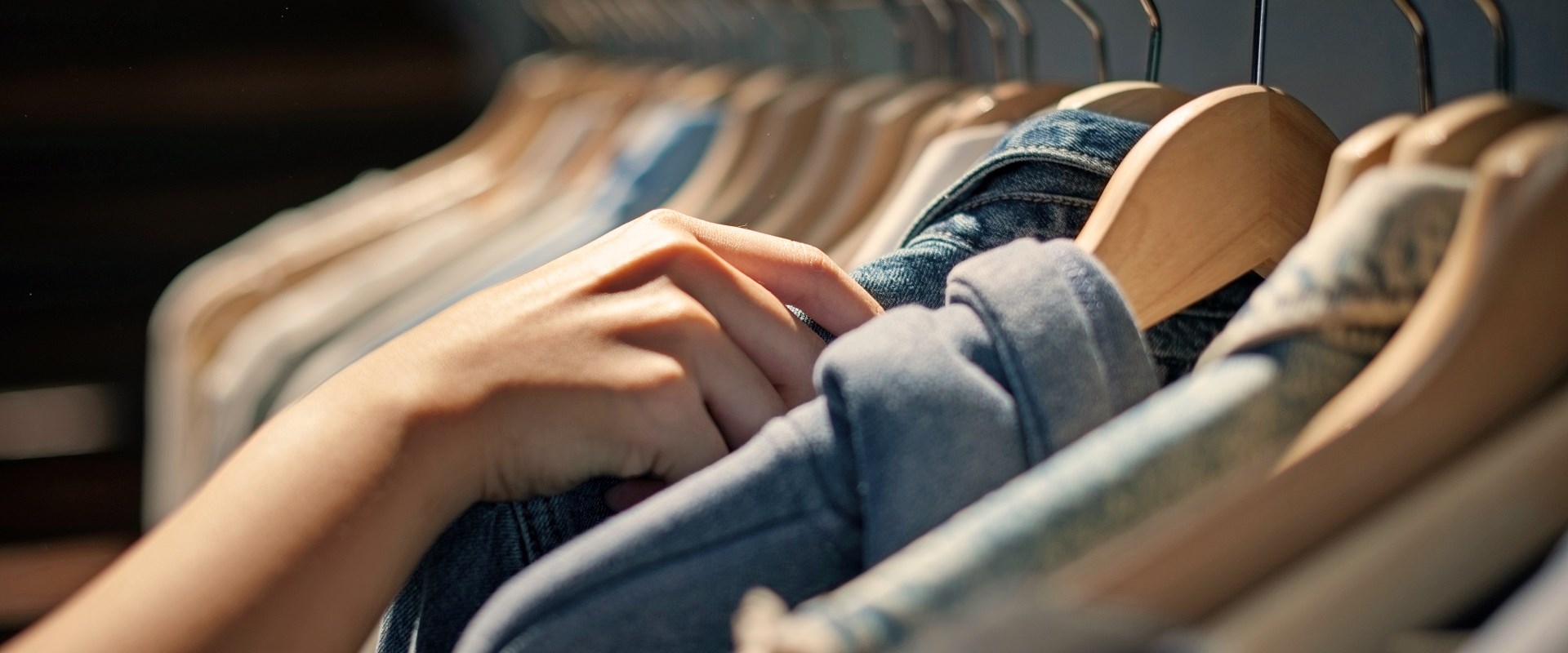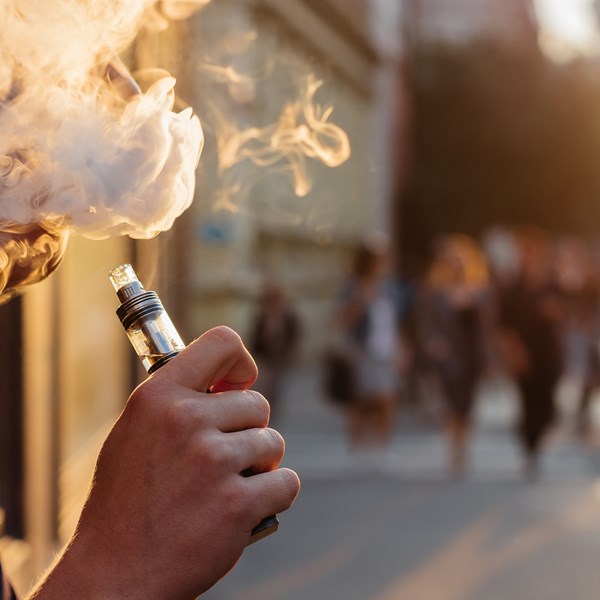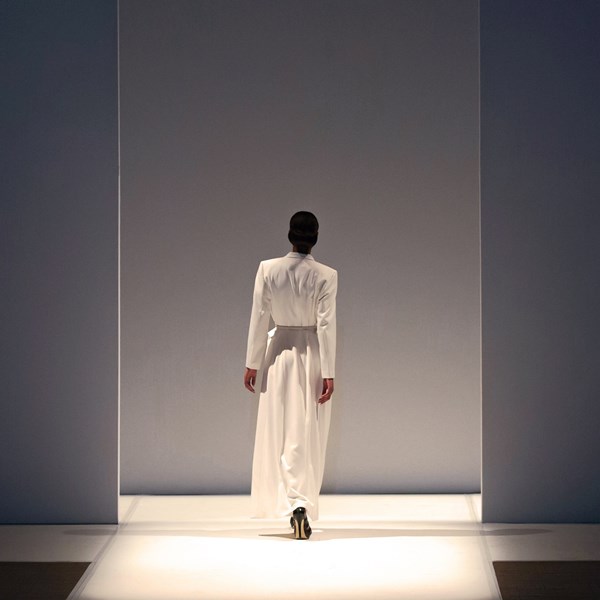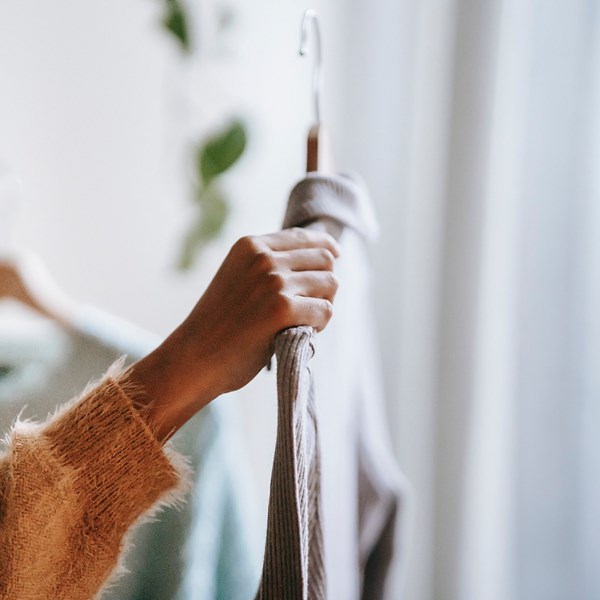In this four-part Sustainability Series, we explore what the EU and fashion brands are doing to address sustainability, including through strategies and utilising innovative fabrics and manufacturing processes.
The second-hand market is experiencing notable growth and evolution, the value of the second-hand industry is already 3% to 5% of general fashion sales and it’s expected to grow up to 40% in the coming years.
Consumers are increasingly embracing pre-owned clothing and accessories as a sustainable and budget-friendly alternative to traditional retail. This shift is powered by various factors, including environmental concerns, and the desire for unique and vintage pieces.
WHAT IS UPCYCLING?
Upcycling refers to the process of improving an existing product by modifying it. It can generally be described as a process where used products are transformed into new products without the materials being degraded. The fashion industry in particular has embraced upcycling, for example by creating new clothes from a combination of vintage fabrics, turning old bags into shoes, and buttons on discontinued clothes into earrings.
Unsurprisingly, given their appeal to consumers, many upcycled products include elements from existing luxury products. In general, these luxury products are protected by IP rights such as trade marks, design rights, and copyright. This means that upcycled products may infringe those rights.
TRADE MARK PERSPECTIVES
The essential function of a trade mark is to guarantee the identity of the origin of the marked product to the consumer or end-user by enabling them, without any possibility of confusion to distinguish such product or service from those of others.
The trade mark owner enjoys the exclusive right to use the registered trade mark, and the owner can prohibit the unauthorized use of the trade mark by others. There is, however, a significant restriction on the brand owner’s exclusive right, namely the exhaustion of rights. European trade mark law states that trade mark rights are exhausted if the goods bearing the trade mark have been put on the market in the European Economic Area by trade mark owners or with their consent. This means, that once the owner puts the goods on the market, they can no longer prevent further commercialisation of the same items.
Nevertheless, the owner may have valid reasons for opposing such commercialisation, especially when the condition of the goods has changed after they were placed on the market, which could mislead consumers into believing that the trade mark owner has authorised such products. In such cases, an exception to trade mark exhaustion may apply - significant damage to a trade mark’s reputation is a valid reason for trade mark owners to oppose further commercialization of the goods. In a case involving Christian Dior, the Court of Justice of the European Union held that this exception applies, particularly for luxury brands, as long as the brand owner can prove the brand’s aura of luxury has been severely damaged by how the reseller advertises the goods.
NAVIGATING THE LEGAL LANDSCAPE
Indeed, upcycling poses issues and concerns for brand owners, who are now required to reflect more broadly on the whole lifecycle of their product, including the period after the products have been put into the market. For many high-end consumers, a part of the allure of luxury brands is a certain level of exclusivity, when the market is flooded with products that appear to come from the brand this exclusive image can quickly be diluted.
Trade marks are a powerful tool that brand owners can use to protect themselves against these concerns. Companies facing issues with infringing “upcyclers”, can utilize different tools to protect their brands from misuse and avoid dilution of their trade mark rights and damaging their image.
Many brands have also found possible alternative solutions to this problem by upcycling their products themselves to have full control over their processing and avoid third parties doing it. Some brands have started entering the second-hand market, creating web shops to sell vintage items or allow consumers to list their pre-owned items. This could help brands control the quality of second-hand goods and also preserve any aura of luxury. Moreover, it could give brands part of the second-hand turnover, and could also attract new audiences and stay relevant, showing that they keep evolving to meet the needs of their audience.
CONCLUSION
The upcycling movement appears to be gaining significant momentum, and only time will show how it is going to evolve. Upcycling can have significant environmental benefits, as it not only helps to reduce waste but also the need for new raw materials. Fashion companies should certainly explore this new trend and learn how to thrive through it.
The Sustainability Series is a four-part series exploring what fashion brands and the EU are doing to address the critical issue of sustainability in the fashion industry.






